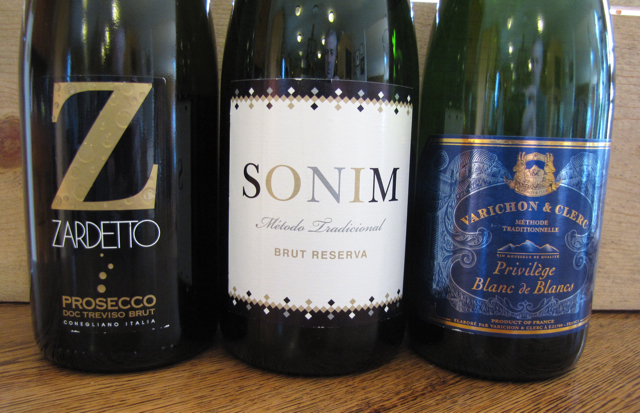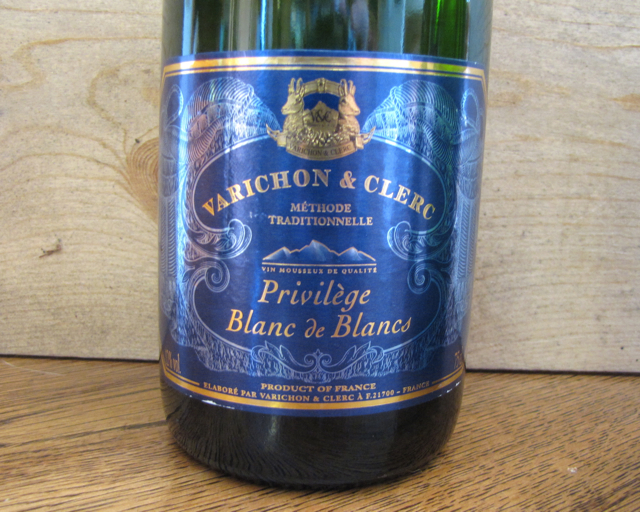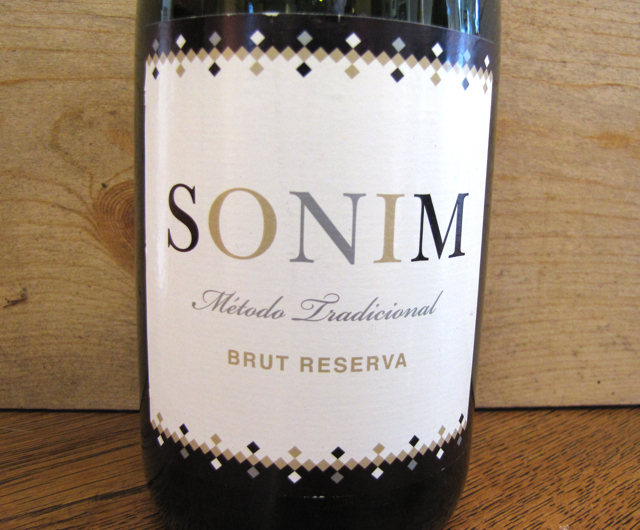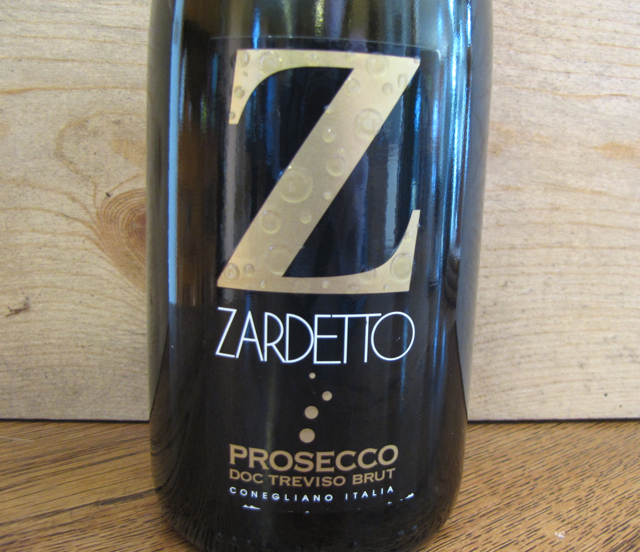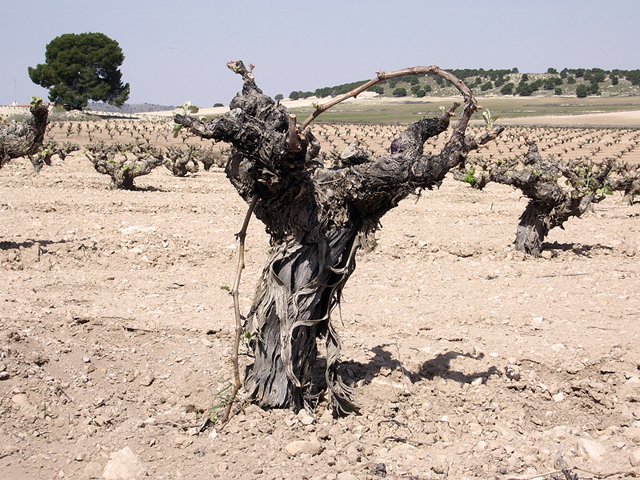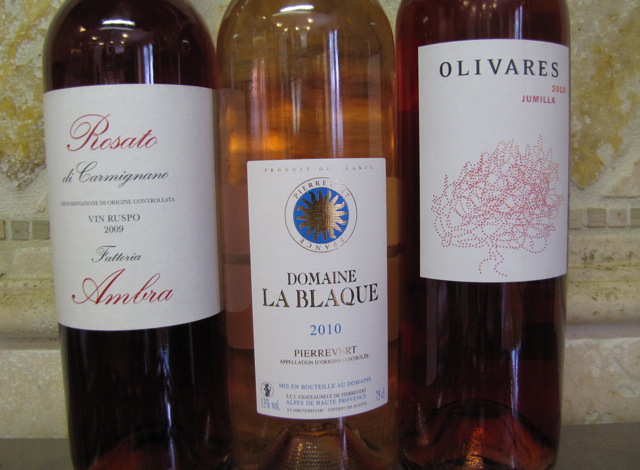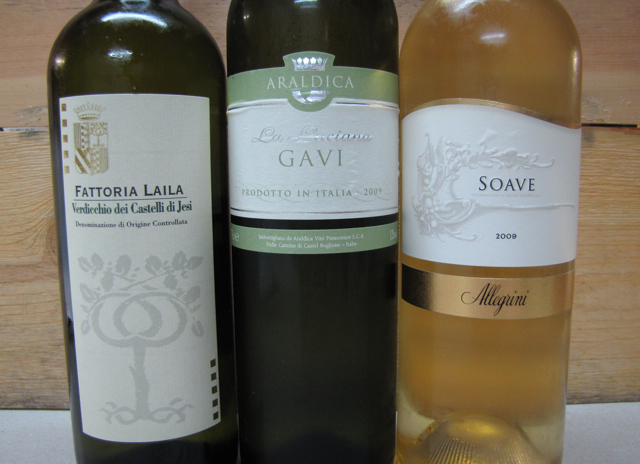Jonas, from Excellent Everyday Wines, has provided a holiday themed post just in time for your holiday and New years celebrations. Enjoy!
___________________________
As we move towards the end of the year holidays, sparkling wine sales pick up quite a bit of steam. In fact, a large majority of producer’s sparkling wine sales – by some estimates almost half – come in the month of December. And while true Champagne (which only comes from the Champagne region of France) is still the king, great value sparkling wines are available from many different countries.
For this tasting, we opened three sparklers from three different countries, all designated a “brut” or dry style with 12 or less grams of residual sugar per liter and all costing under $15. Two of them, The French sparkler from Varichon and Clerc and the Spanish Cava “Sonim”, are made in the champagne method which involves inducing a secondary fermentation in the bottle by adding yeast and sugar. The carbon dioxide produced is the source of the bubbles. The Italian Prosecco from Zardetto is produced in closed stainless steel tanks where the same process is induced in a larger volume.
The first wine in our tasting was the Varichon and Clerc, a French bubbly produced via the Champagne method from three grapes, Ugni Blanc, Chenin Blanc and Colombard. It retails at my local store for just $9.99.
Here we have fine, small bubbles with aromas dominated by nutty/yeasty tones. It was also very nutty in the mouth at first but with airing
began to show some apple and pear elements. The nose also opened a bit more and showed some melon and vanilla. It’s delicate, steely and finishes quite dry with good length. It’s a great value at this price point.
Next up at $12.99 was the Spanish Cava Sonim. This sparkler, produced from 40% Parellada, 30% Macabeu and 30% Xarel-lo, three indigenous Spanish grapes, had a much more pronounced leesy/nutty nose with vanilla and herbal tones. In the mouth, the Sonim leans much more to citrusy fruit tones, especially lime zest. It finishes dry and tangy with good persistence. It’s imported by Aviva Vino.
Lastly we tried the $12.99 Italian Prosecco from Zardetto. With this sparkler we found a much more fruit driven nose featuring apricot and melon with the nutty nuance clearly taking a back seat. This may have had something to do with the secondary fermentation occurring in tank as opposed to in the bottle. In the mouth, there was clearly more sweet fruit, again dominated by apricot and white fruits. It finishes long, yet still dry and though it’s not quite as delicate as the Varichon and Clerc, If you like a fruitier style, this one’s for you.
Imported by topnotch importer Winebow, this sparkler is a sure crowd pleaser. If I had to rank them in order of my preference, I’d go with the Zardetto as number one, followed by the Varichon and Clerc and then the Sonim. Still, they are all good values and present excellent examples of sparkling wines that won’t bust your budget. They’ll make great aperitifs to a special holiday meal.
Happy Holidays and as always, cheers!

